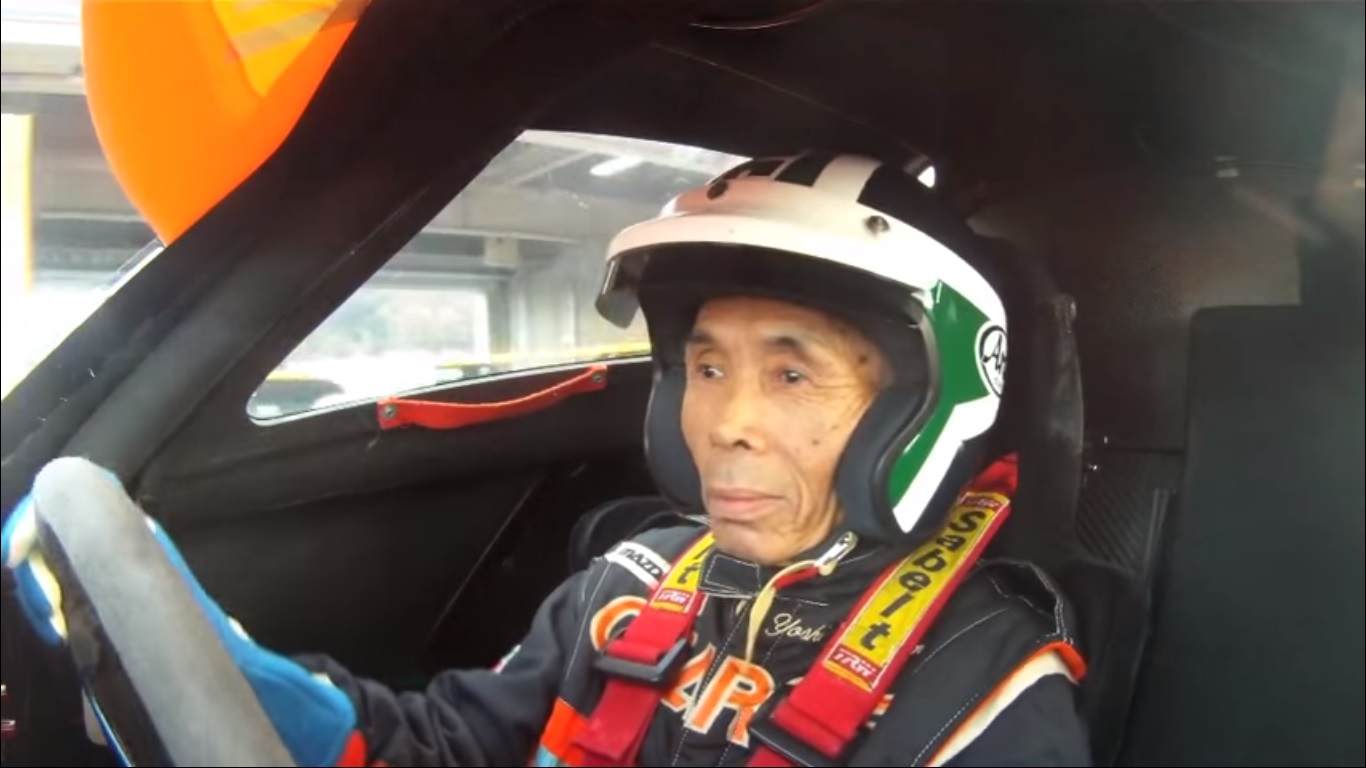In March, Japanese sports car racing legend Yoshimi Katayama died at the age of 75. Aside from an eloquent memorial by The Drive and a short obituary in Road & Track, Katayama’s passing went largely unnoticed in the U.S.—including by us here at BangShift—but the Japanese driver actually enjoyed great success here in the U.S. in sports cars. His career is a fairly unique one among professional drivers and deserves more recognition than he got at the time of his passing.
Katayama started his racing career on two wheels, riding for Suzuki in the 50cc and 125cc motorcycle world championships in the mid-1960s. He is shown briefly in this 1966 film from the Dutch circuit TT Assen (#4 on the track and possibly the fellow in the passenger seat of the Suzuki team’s Corvair Greenbrier), where he picked up a race win in the 125cc class. He went on to win a half-dozen motorcycle grands prix in ‘66 and ‘67 on his way to a runner-up finish in the 1967 50cc championship and his two-wheel exploits also included podium finishes at the grueling Isle of Man TT.
However, Katayama made name for himself after switching to four wheels and as a long-term factory driver for Mazda, he logged nearly a quarter-century testing and racing race cars for the manufacturer. His first big splash on the international racing scene came in 1969 at the Spa 24 Hours, where he led the factory Mazda R100s on a charge from obscurity to challenge for the overall win and outduel all but a handful of Porsches. Katayama’s car finished 5th overall in the early Wankel-engined race cars that cranked 200 horsepower from their two-rotor 10A engines. While Katayama isn’t in this recent vintage racing video, a couple of R100s are in it from their return to Spa-Francorchamps, where the early Wankels still sound unique.
From there, Katayama became a staple of domestic sports car racing, racking up tons of overall and class wins in Japanese series for Mazda and Mazda-powered prototype cars. He also scored a class win at the 1975 Kyalami 9 Hours in South Africa in a Mazda S102A and made his first visit to Mount Panorama for the Bathurst 1000 in 1977. That race ended poorly for Katayama and his Mazda RX-3 with a massive tumble at Murray’s Corner.
In 1978, Katayama ventured to the United States for his first race across the Pacific, the 24 Hours of Daytona. His RX-3 didn’t finish, but he returned to Daytona the following year in an RX-7 to win the GTU class with his co-drivers Takashi Yorino and Youijirou Terada. The trio would become a formidable force in international sports car racing. They won at Daytona again in 1982 with a GTO-class RX-7 and then piled on three class wins at Le Mans with the wheel-skirted Mazda 717C (1983) in the Group C “Junior” class.
Later in 1979, Katayama headed to the West Coast for a week to run a pair of back-to-back IMSA GTU races in an RX-7 owned by Roger Mandeville at two tracks where Katayama had never raced: Sears Point and Portland International Raceway. How good was Katayama? He set the pole time at both races and managed podium finishes in both of them. At Portland, he spun from the lead on oil, which caused him to drop a bunch of positions before he then knocked the gap down to just 5.4 seconds by the race’s end.
Katayama also returned to Bathurst in 1982 to share an RX-7 with Australian touring car heavyweight Allan Moffatt. The pair finished 6th that year, but the following year’s second-place finish proved Katayama was perfectly capable of taming the mountain.
After another class win at Le Mans in 1984 with the Goodyear-sponsored, street-tire-wearing Argo-Mazda, Katayama spent much of the 1980s driving and shaking down Mazda’s Group C cars. He raced all of them—737, 757, 767, 767B, and 787—mostly with his trusty codrivers Yorino and Terada. In 1990, the trio headed to Le Mans one final time with Katayama pushing 50 years old. They drove the older 767B that year in the “IMSA” class, which also included a Porsche 956 and two of Mazda’s brand-new 787s. Both 787s failed to finish and the old-hat Japanese drivers won in their last hurrah together.
The following year, the 787B became the first and only Japanese car and team to win at Le Mans. While Katayama was not in the car, his work testing, racing, and popularizing rotary-powered sports cars had paved the way not only for Mazda’s Le Mans success but for anybody who has ever raced a Mazda rotary engine. In 2011 at the Okayama Circuit in Japan, 71-year-old Yoshimi Katayama took one final drive in the Le Mans-winning 787B.
Rest in peace, Yoshimi Katayama.













In the bathurst crash vid, about 42seconds, it looks like he may not have had his seatbelt on as his head was nearly out the window
He probably was but Australian Touring Car saftey equipment in the 70’s was pretty rudimentary, the belts were most likely production fitment. Drivers used to drive barefoot while munching down on a sandwich through their open face helmet before sparking up a ciggie to finish it off. Thank you speedgods for window nets and progress……